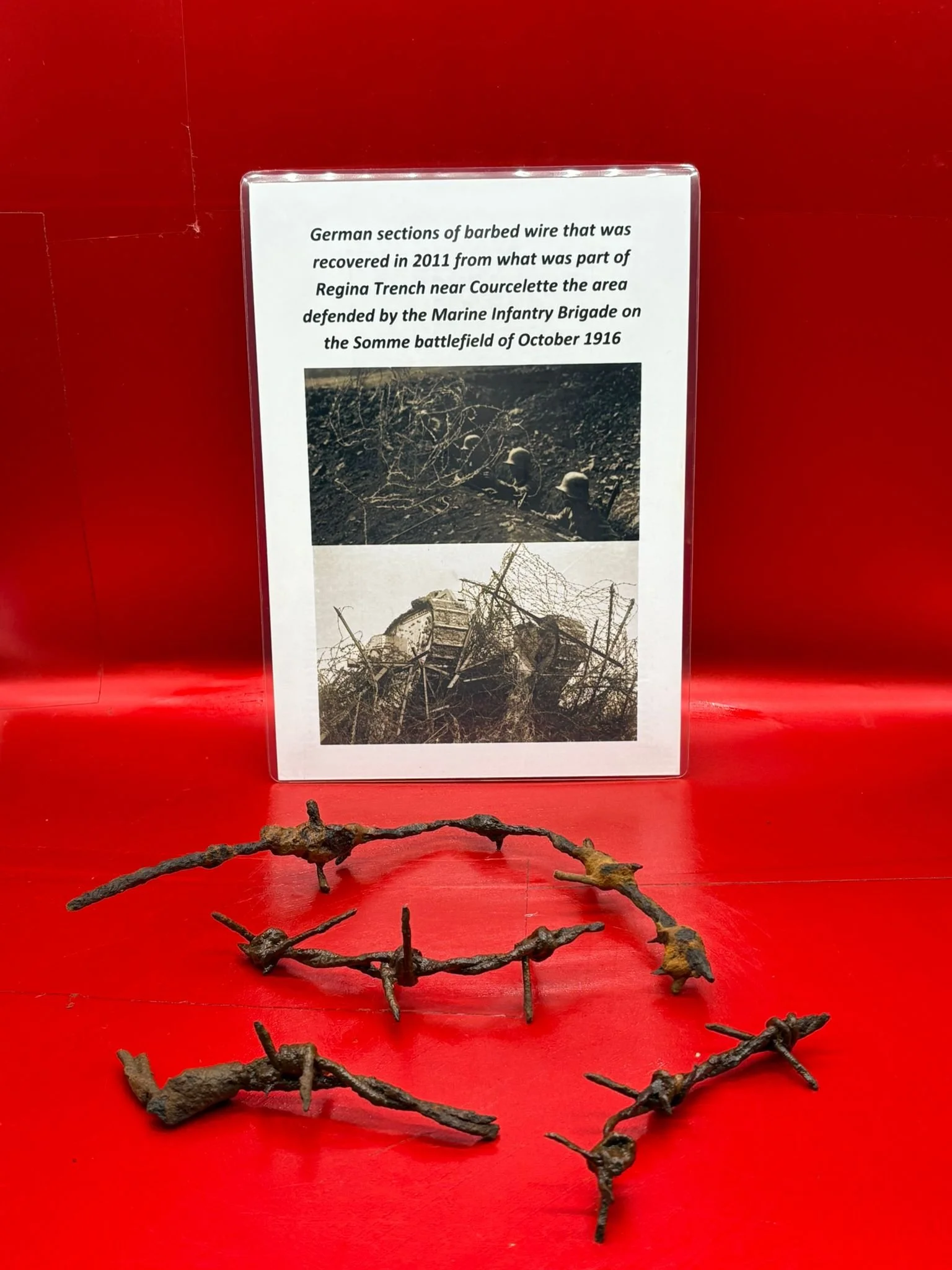 Image 1 of 8
Image 1 of 8

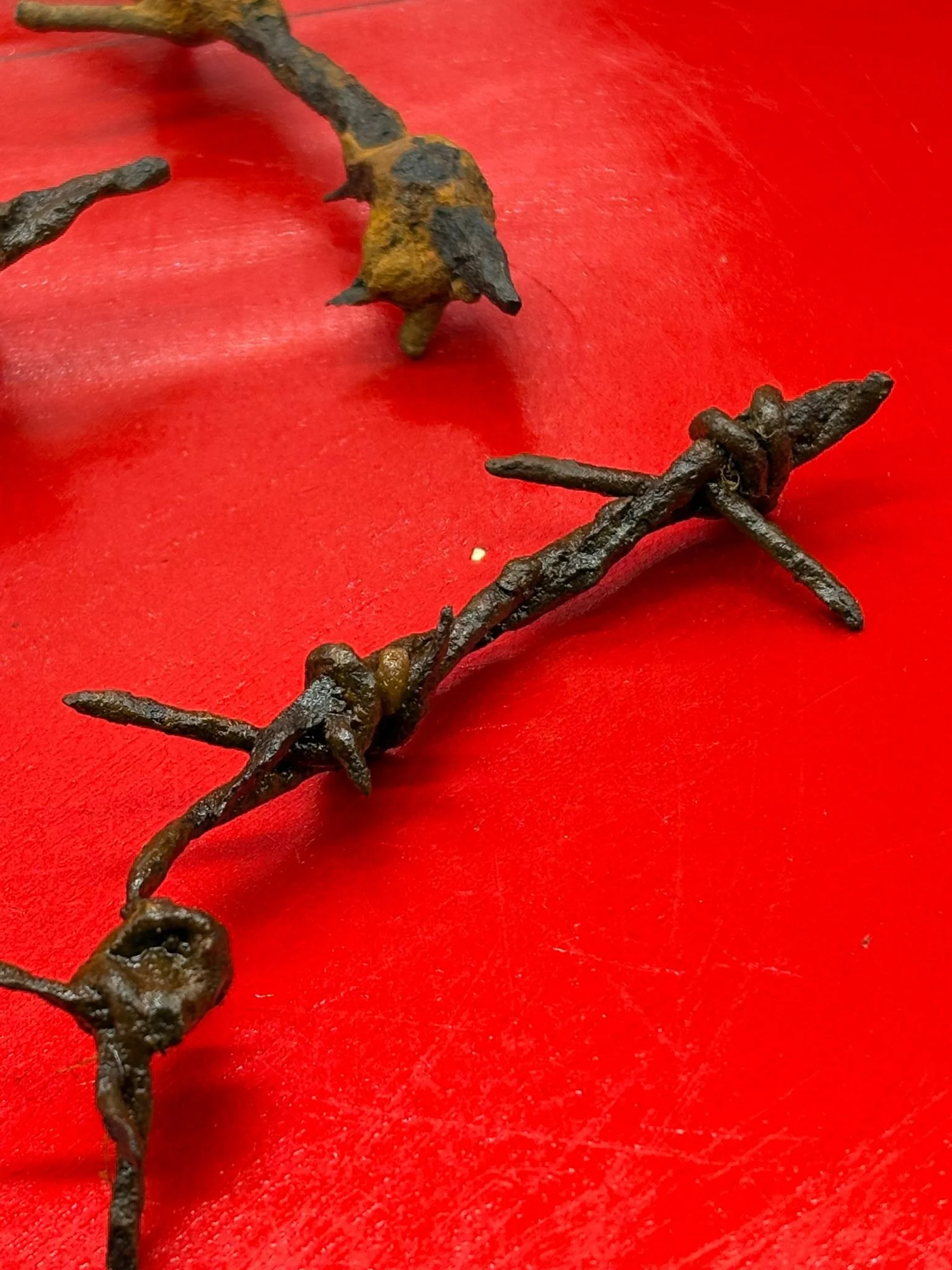 Image 2 of 8
Image 2 of 8

 Image 3 of 8
Image 3 of 8

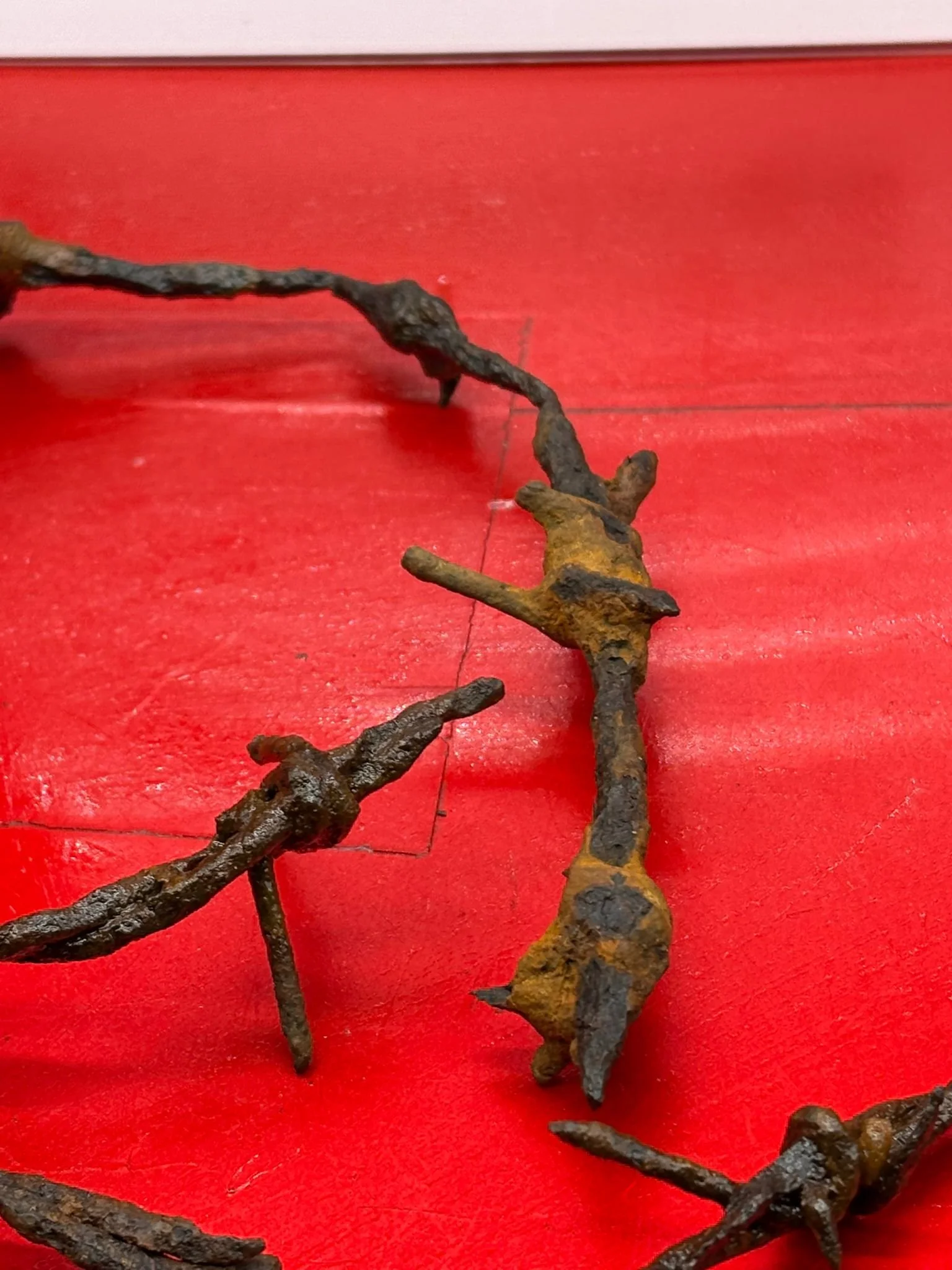 Image 4 of 8
Image 4 of 8

 Image 5 of 8
Image 5 of 8

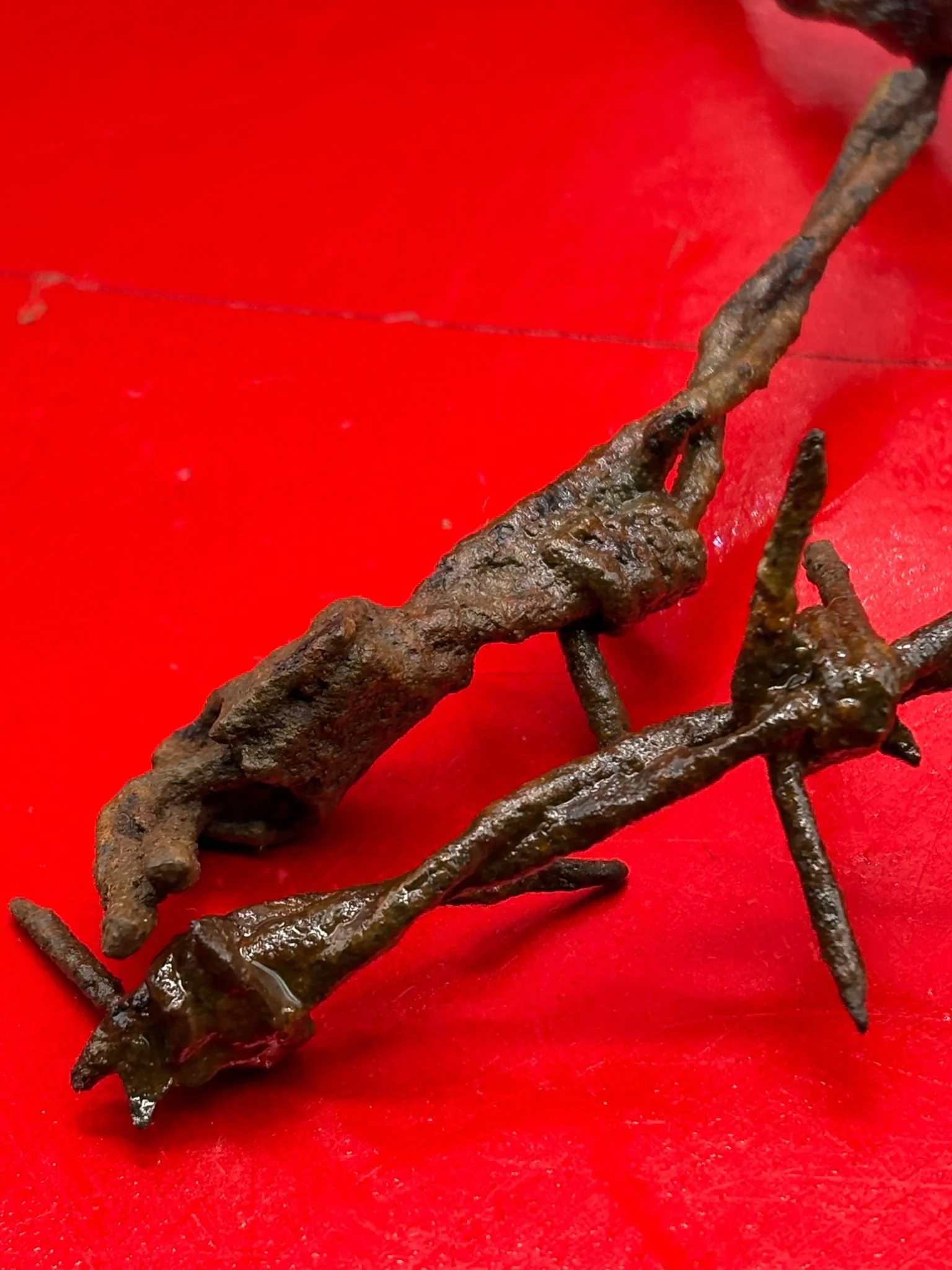 Image 6 of 8
Image 6 of 8

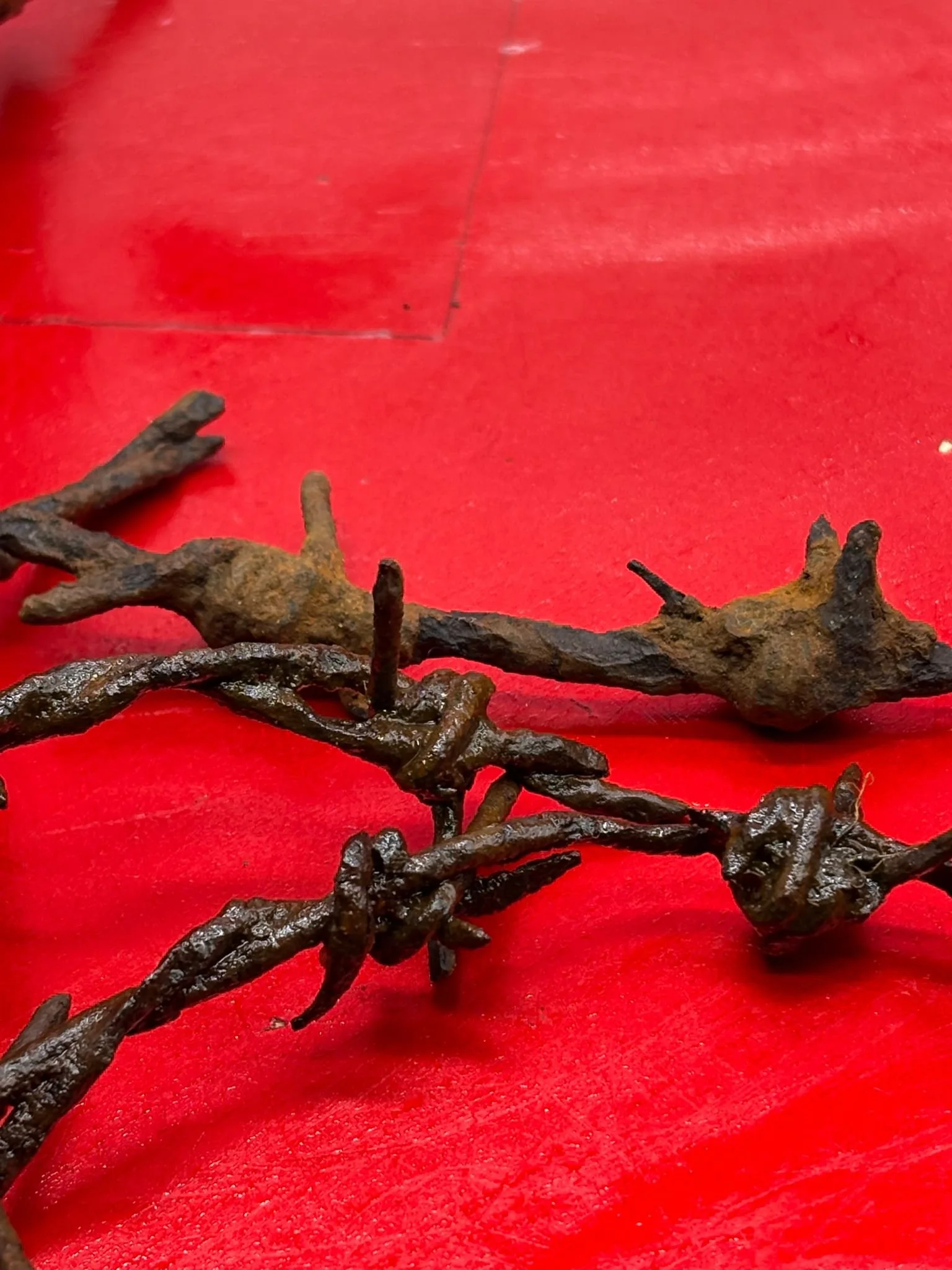 Image 7 of 8
Image 7 of 8

 Image 8 of 8
Image 8 of 8









German sections of barbed wire,solid parts that were recovered in 2016 from Regina trench defensive position near the village of Courcelette the October 1916,Somme
This is a group of German barbed wire sections 4 of them in all different sizes 4-9 inches long and the typical heavy duty early war wire. The wire is very rusty but still in solid condition and have been very well cleaned and are not breaking up or falling apart they are perfect for display or any collection. The wire which would have been used by German soldiers of the Marine Infantry Brigade they were recovered in 2016 from Regina trench defensive position near the village of Courcelette the October 1916 battlefield on the Somme. This is a nice condition relic with well known history recovered 9 years ago on the famous Somme battlefield of late summer 1916.The wire comes with a A5 laminated information card with pictures.
In late September, the Marine Infantry Brigade, comprising the 1st and 2nd Marine-Brigaden from the 1st Marine-Division and the 3rd Marine-Brigade from the 2nd Marine-Division, with an infantry complement equivalent to an army division. The marines were well-trained and rested troops of excellent quality and were transferred moved from the Belgian coast to the Somme. The move was as part of a general relief of the divisions opposite the British. On 30 September, the Marine-Brigaden moved up through Baum Mulde (Boom Ravine) and relieved the 8th Division on the right of the 4th Ersatz Division.
Regina Trench (Staufen Riegel) was a German Trench dug along the north-facing slope of a ridge running from north-west of the village of Le Sars south-westwards to Stuff Redoubt (Staufenfeste), close to the German fortifications at Thiepval on the Somme battlefield. It was the longest such trench on the German front during the First world war. Attacked several times by the Canadian Corps during the Battle of the Ancre Heights, the 5th Canadian corps briefly controlled a section of the trench on 1 October but was repulsed by counter-attacks of the German Marine Brigade(equivalent to an army division), which had been brought from the Belgian coast. An attack on 8 October, by the 1st Canadian Division and the 3rd Canadian Division on Regina Trench also failed. On 21 October, the 4th Canadian Division attacked the western portion of Regina Trench, as the 18th Division, 25th Division and the 39th Division of II Corps, attacked the part further west (known as Stuff Trench to the British). The Canadians met little opposition and gained the objective, as the II Corps divisions captured Stuff Trench in thirty minutes, giving the British control of the Thiepval Ridge. Three counter-attacks were repulsed by the Canadians and by 22 October, more than a thousand Germans had been taken prisoner. The east end of the trench was captured by the 4th Canadian Division during the night of 10/11 November.
This is a group of German barbed wire sections 4 of them in all different sizes 4-9 inches long and the typical heavy duty early war wire. The wire is very rusty but still in solid condition and have been very well cleaned and are not breaking up or falling apart they are perfect for display or any collection. The wire which would have been used by German soldiers of the Marine Infantry Brigade they were recovered in 2016 from Regina trench defensive position near the village of Courcelette the October 1916 battlefield on the Somme. This is a nice condition relic with well known history recovered 9 years ago on the famous Somme battlefield of late summer 1916.The wire comes with a A5 laminated information card with pictures.
In late September, the Marine Infantry Brigade, comprising the 1st and 2nd Marine-Brigaden from the 1st Marine-Division and the 3rd Marine-Brigade from the 2nd Marine-Division, with an infantry complement equivalent to an army division. The marines were well-trained and rested troops of excellent quality and were transferred moved from the Belgian coast to the Somme. The move was as part of a general relief of the divisions opposite the British. On 30 September, the Marine-Brigaden moved up through Baum Mulde (Boom Ravine) and relieved the 8th Division on the right of the 4th Ersatz Division.
Regina Trench (Staufen Riegel) was a German Trench dug along the north-facing slope of a ridge running from north-west of the village of Le Sars south-westwards to Stuff Redoubt (Staufenfeste), close to the German fortifications at Thiepval on the Somme battlefield. It was the longest such trench on the German front during the First world war. Attacked several times by the Canadian Corps during the Battle of the Ancre Heights, the 5th Canadian corps briefly controlled a section of the trench on 1 October but was repulsed by counter-attacks of the German Marine Brigade(equivalent to an army division), which had been brought from the Belgian coast. An attack on 8 October, by the 1st Canadian Division and the 3rd Canadian Division on Regina Trench also failed. On 21 October, the 4th Canadian Division attacked the western portion of Regina Trench, as the 18th Division, 25th Division and the 39th Division of II Corps, attacked the part further west (known as Stuff Trench to the British). The Canadians met little opposition and gained the objective, as the II Corps divisions captured Stuff Trench in thirty minutes, giving the British control of the Thiepval Ridge. Three counter-attacks were repulsed by the Canadians and by 22 October, more than a thousand Germans had been taken prisoner. The east end of the trench was captured by the 4th Canadian Division during the night of 10/11 November.
